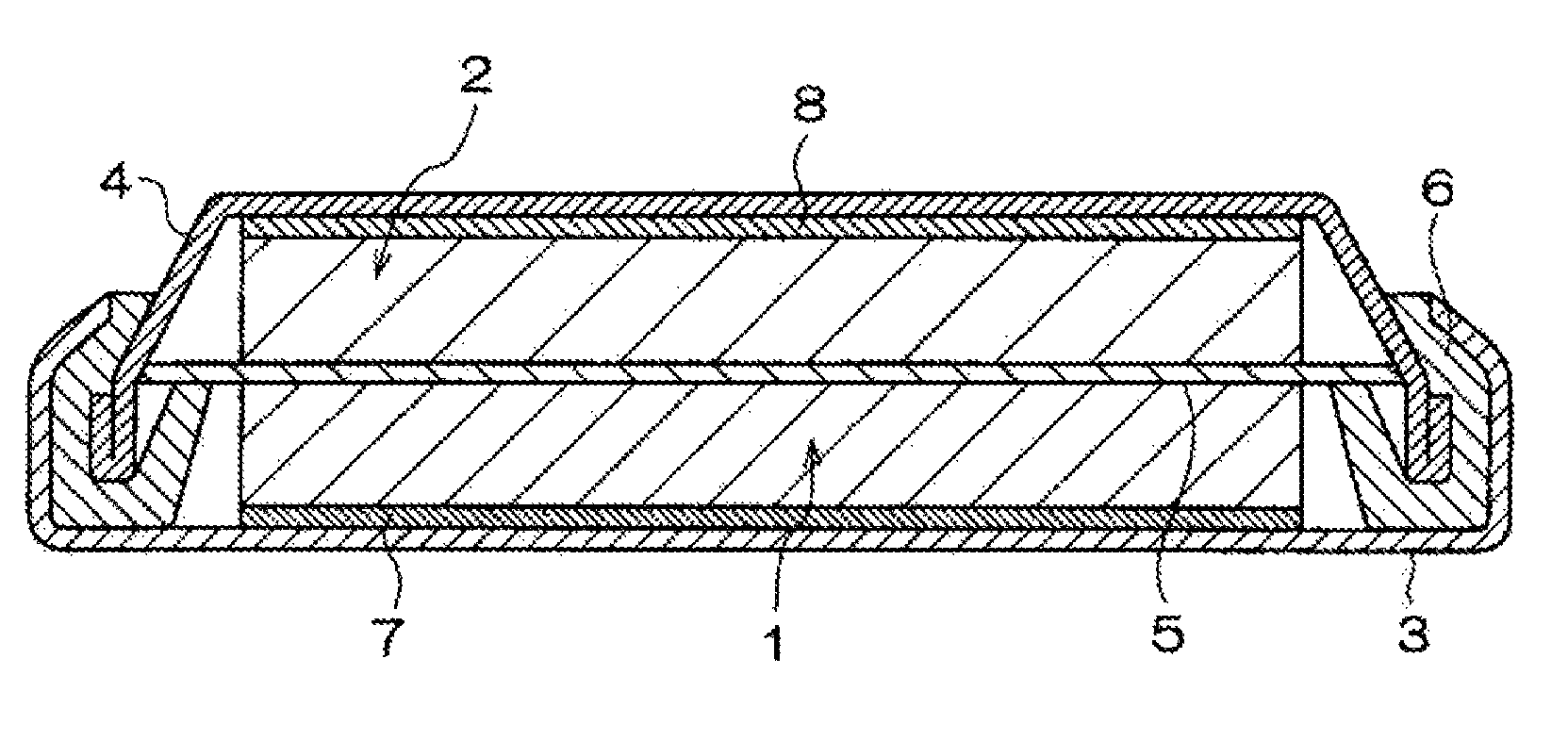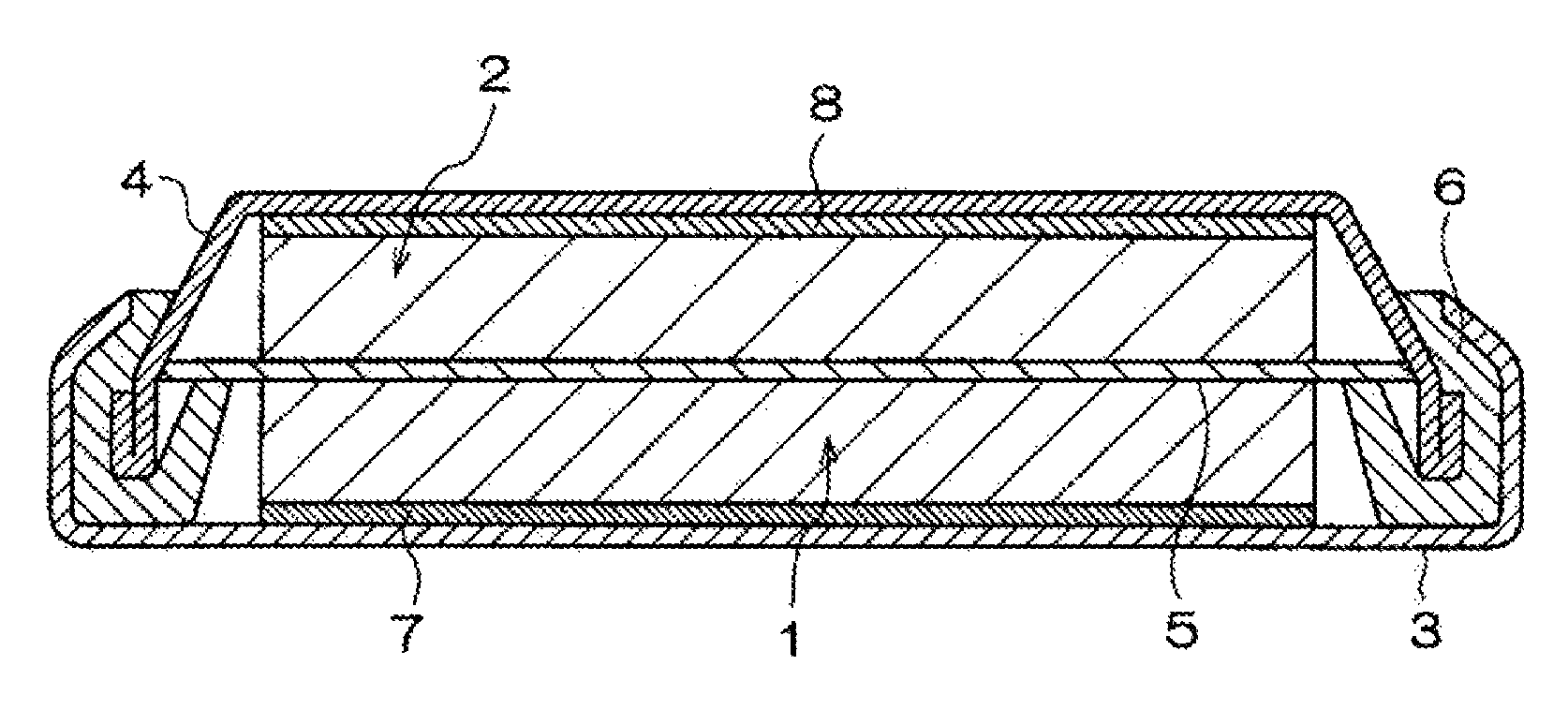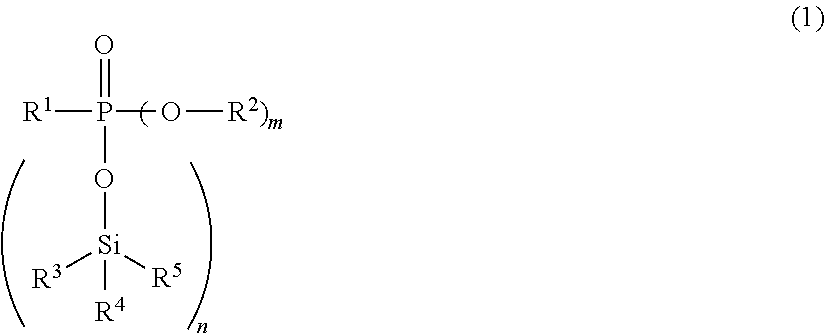Nonaqueous electrolyte solution containing silyl ester group-containing phosphonic acid derivative, and lithium secondary battery
a technology of silyl ester group and phosphonic acid, which is applied in the direction of group 5/15 element organic compounds, electrochemical generators, transportation and packaging, etc., can solve the problems of battery performance degradation in a high-temperature environment, and achieve the effect of reducing battery resistance, improving battery output characteristics, and inhibiting performance degradation
- Summary
- Abstract
- Description
- Claims
- Application Information
AI Technical Summary
Benefits of technology
Problems solved by technology
Method used
Image
Examples
examples
[0341]The present invention will now be described more concretely by way of examples thereof; however, the present invention is not restricted to these examples. It is noted here that, in the following examples, “%” means % by mass.
Synthesis of compounds represented by the Formula (1)
example compound 95
Synthesis of Example Compound 95
[0342](Hydroxymethyl)phosphonic acid diethyl ester (20 mmol, 3.36 g) and triethyl amine (24 mmol, 2.42 g) were dissolved in methylene chloride and the resulting solution was cooled to 5° C. Then, methanesulfonyl chloride (24 mmol, 2.75 g) was added thereto dropwise. After stirring the resultant at 5° C. for 0.5 hour and then at room temperature for 1 hour, insoluble matters were removed by filtration. The thus obtained filtrate was washed with 1N hydrochloric acid, aqueous sodium bicarbonate solution and saturated saline, and then dried with magnesium sulfate. This magnesium sulfate was removed by filtration and an oily matter obtained by concentrating the filtrate was purified by silica gel column chromatography (ethyl acetate / n-hexane) to obtain colorless and transparent (methanesulfonyloxymethyl)phosphonic acid diethyl ester (yield: 3.77 g, 77%). The result of 1H-NMR measurement of this compound is shown below.
[0343]1H-NMR (270 MHz, CDCl3) δ (ppm):...
example compound 2
Synthesis of Example Compound 2
[0346]Methylphosphonic acid dimethyl ester (16.1 mmol, 2.0 g) was dissolved in 20 ml of dry methylene chloride and trimethylsilyl bromide (3 eq., 48.4 mmol, 7.4 g) was added thereto dropwise at room temperature. The resultant was stirred at room temperature for 5 hours and concentrated under reduced pressure. The resulting oily matter was vacuum-distilled (51 to 52° C. / 0.3 kPa) to obtain Example Compound 2 (yield: 2.46 g, 64%). The result of 1H-NMR measurement of the Example Compound 2 is shown below.
[0347]1H-NMR (270 MHz, CDCl3) δ (ppm): 1.41-1.35 (3H, d, J=17.8 Hz), 0.23 (18H, s)
PUM
| Property | Measurement | Unit |
|---|---|---|
| density | aaaaa | aaaaa |
| interplanar spacing | aaaaa | aaaaa |
| temperature | aaaaa | aaaaa |
Abstract
Description
Claims
Application Information
 Login to View More
Login to View More - R&D
- Intellectual Property
- Life Sciences
- Materials
- Tech Scout
- Unparalleled Data Quality
- Higher Quality Content
- 60% Fewer Hallucinations
Browse by: Latest US Patents, China's latest patents, Technical Efficacy Thesaurus, Application Domain, Technology Topic, Popular Technical Reports.
© 2025 PatSnap. All rights reserved.Legal|Privacy policy|Modern Slavery Act Transparency Statement|Sitemap|About US| Contact US: help@patsnap.com



